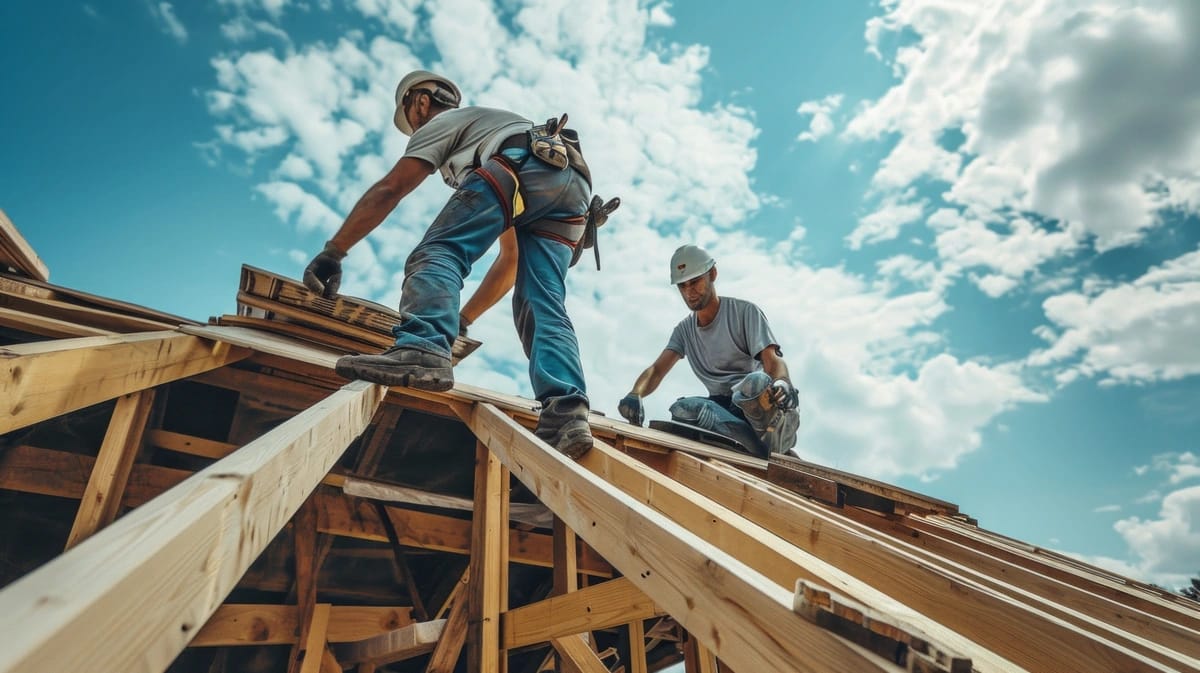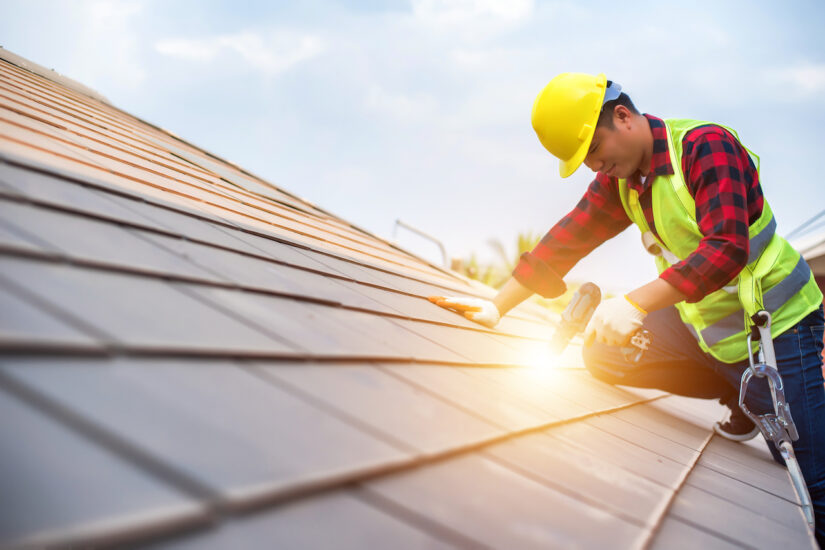Comprehending the Different Types of Roofs: A Comprehensive Overview for Homeowners
In the world of homeownership, picking the proper roof style is a decision that brings significant ramifications for both capability and visual charm. With a variety of choices-- ranging from the traditional gable to the contemporary flat-- each type offers one-of-a-kind advantages and challenges that ought to straighten with the homeowner's details demands and environmental factors to consider. Comprehending these distinctions not just aids in making an educated option yet likewise influences long-term upkeep and power performance. As we check out the intricacies of different roof covering types, it becomes apparent that one size does not fit all; the best option may shock you.
Saddleback Roof
Saddleback roofs, defined by their triangular form, are amongst the most popular roof covering styles due to their simpleness and efficiency in shedding water and snow. This layout includes 2 sloping sides that fulfill at a ridge, enabling for effective water drainage and lessening the danger of water build-up. The steep pitch commonly associated with gable roof coverings boosts their capacity to take care of heavy precipitation, making them suitable for numerous environments.
Along with their sensible benefits, saddleback roofs supply aesthetic versatility. They can be adjusted to numerous architectural designs, from conventional to modern-day homes. The design can likewise suit added attributes such as dormer home windows, which enhance natural light and ventilation in the attic room.
Furthermore, gable roofs supply sufficient space for insulation, contributing to power performance. Home owners can select from a variety of roof products, consisting of asphalt tiles, metal, and tiles, additionally enhancing customization alternatives.
Regardless of their advantages, gable roof coverings might call for additional assistance in areas vulnerable to high winds or hefty snowfall. Generally, the gable roof continues to be a preferred choice as a result of its blend of capability, toughness, and visual allure.
Apartment Roofs
Flat roofing systems are frequently acknowledged for their minimal design and functional applications, especially in commercial and industrial settings (oahu roofing). These roofs include a horizontal or nearly straight surface, which permits easy building and construction and flexible space application. While they may do not have the visual appeal of pitched roofings, flat roof coverings use numerous advantages, particularly in urban settings where optimizing area is crucial
One of the key advantages of flat roof coverings is their accessibility. House owners can utilize the roof covering area for numerous functions, such as rooftop yards, balconies, or solar panel installations. Furthermore, flat roofs are generally a lot more cost-efficient to maintain and install contrasted to their sloped equivalents, as they require less products and labor.
Nonetheless, flat roofing systems do existing particular challenges. Proper drainage is important to avoid water pooling, which can result in leaks and structural damages. For this reason, selecting premium waterproofing materials and regular examinations are crucial for ensuring durability. Typical materials made use of for level roofs consist of built-up roof covering (BUR), changed asphalt, and single-ply membranes, each offering unique advantages. On the whole, level roofings act as a versatile and functional option for many home owners and companies alike.
Hip Roofing Systems
Hip roofs are identified by their sloped sides that assemble on top, creating a ridge. This design is unique from saddleback roofs, as all four sides of a hip roof incline downwards toward the walls, offering a much more steady framework. The angle of the slopes can differ, permitting versatility in architectural looks and capability.
One of the key benefits of hip roofings is their capability to endure heavy winds and negative climate problems. The sloped surfaces allow much better water drain, lowering the risk of leakages and water damage. In addition, hip roof coverings offer raised attic room, which can be utilized for storage space or even exchanged livable areas.
However, building a hip roof covering can be more intricate and expensive than simpler roof covering kinds, such as gable roof coverings. The extra material and labor associated straight from the source with creating the slopes and making certain correct architectural stability can cause higher expenditures. Despite these drawbacks, numerous homeowners favor hip roofings for their sturdiness, aesthetic allure, and potential for energy efficiency.
Mansard Roof Coverings
Mansard roof coverings, often recognized by their special four-sided design, feature 2 inclines on each side, with the lower slope being steeper than the upper. This architectural style, originating from France in the 17th century, is not just cosmetically enticing but functional, as it optimizes the functional space in the upper floorings of a building. The high lower slope enables for more clearance, making it an optimal option for lofts or attics, which can be exchanged living spaces.
Mansard roofings are defined by their flexibility, suiting various building designs, from traditional to contemporary. They can be created with different materials, consisting of asphalt shingles, slate, or metal, providing property owners with a series of options to suit their spending plans and choices. Furthermore, the layout allows for the combination of dormer home windows, boosting all-natural light and air flow in the upper degrees.
Nevertheless, it is necessary to think about the possible drawbacks. Mansard roofing systems might call for even more upkeep as a result of the complexity of their layout, and their high slopes can be challenging for snow and rain overflow. Generally, mansard roofings incorporate sophistication with practicality, making them a prominent choice amongst home owners looking for distinctive building features.
Dropped Roofs
As house owners significantly look for simplicity and performance in their building designs, lost roofings have actually arised as a preferred selection. Characterized by a single sloping plane, a shed roofing system presents a minimalist visual that enhances various home designs, from modern to rustic.
Among the main benefits of a shed roofing is its simple construction, which often converts to reduce labor and product expenses. This design enables reliable water drainage, reducing the risk of leakages and water damage. In addition, the upright incline supplies adequate room for skylights, enhancing natural light within the inside.
Shed roofs also offer adaptability in regards to usage. They can be effectively integrated into additions, garages, or outside frameworks like pavilions and sheds. Moreover, go to my site this roof style can fit various roofing products, including steel, asphalt tiles, or perhaps environment-friendly roof coverings, lining up with green campaigns.
Nevertheless, it is crucial to consider local environment problems, as hefty snow tons may necessitate changes to the roofing system's angle or structure. In general, shed roof coverings offer a functional and aesthetically pleasing option for property owners aiming to make best use of capability without compromising style.
Conclusion


Gable roofings, defined by their triangular form, are amongst the most prominent roof designs due to their simplicity and performance in losing water and snow. oahu roofing. The high pitch generally associated with gable roofings improves their ability to manage heavy rainfall, making them suitable for numerous environments
While they may lack the visual charm of pitched roofs, flat roofs provide countless benefits, specifically in urban atmospheres where making best use of space is crucial.
